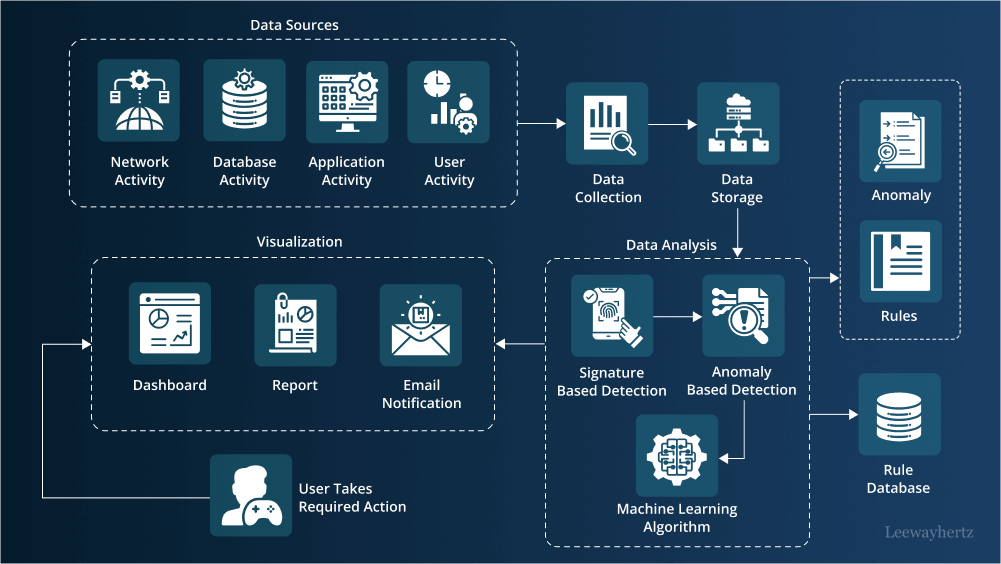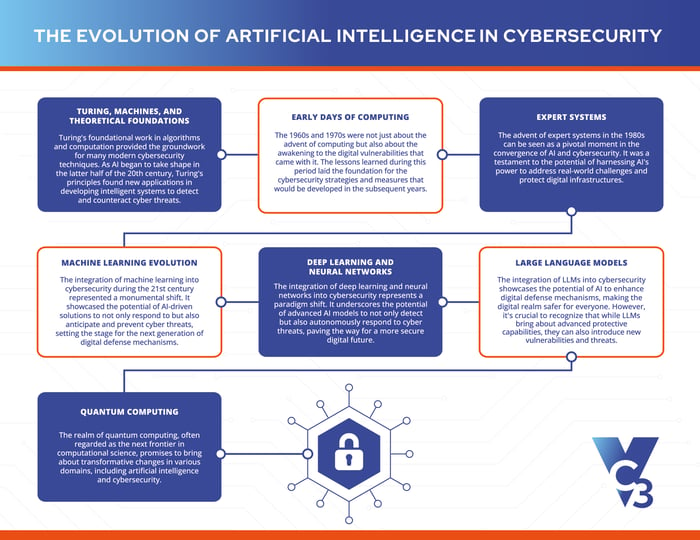- Published on
AI in Cybersecurity Protecting the Digital World
- Authors

- Name
- Adil ABBADI
Introduction
The increasing reliance on digital technologies has brought about unprecedented opportunities for innovation and growth. However, this interconnected world has also introduced a plethora of cybersecurity risks, making it essential to develop and implement robust security measures to safeguard our digital assets. Artificial intelligence (AI) has emerged as a game-changer in the cybersecurity landscape, empowering organizations to detect and respond to threats more effectively. In this article, we'll delve into the world of AI in cybersecurity, exploring its applications, benefits, and the future of threat detection.

- AI-Powered Threat Detection
- AI-Driven Incident Response
- Predictive Maintenance and Vulnerability Management
- AI-Augmented Human Analysis
- Conclusion
- Final Call-to-Action
AI-Powered Threat Detection
Traditional security systems rely on rule-based approaches to identify threats, which can be inefficient and prone to false positives. AI-powered solutions, on the other hand, utilize machine learning algorithms to analyze vast amounts of data, identifying patterns and anomalies that may indicate a potential threat. This enables organizations to detect threats in real-time, reducing the likelihood of a successful attack.
import pandas as pd
from sklearn.ensemble import RandomForestClassifier
from sklearn.model_selection import train_test_split
# Load dataset
data = pd.read_csv('threat_data.csv')
# Split data into features and labels
X = data.drop('label', axis=1)
y = data['label']
# Train and test the model
X_train, X_test, y_train, y_test = train_test_split(X, y, test_size=0.2, random_state=42)
rfc = RandomForestClassifier(n_estimators=100)
rfc.fit(X_train, y_train)
# Evaluate the model
accuracy = rfc.score(X_test, y_test)
print(f"Model accuracy: {accuracy:.3f}")
AI-Driven Incident Response
When a threat is detected, AI-powered incident response systems can automatically respond to contain and mitigate the attack. This rapid response capabilities reduce the mean time to detect (MTTD) and mean time to respond (MTTR), minimizing the damage caused by the attack.

Predictive Maintenance and Vulnerability Management
AI can help predict potential vulnerabilities in an organization's infrastructure, allowing for proactive measures to be taken to prevent attacks. Predictive maintenance and vulnerability management enable organizations to stay one step ahead of potential threats, reducing the attack surface and minimizing the risk of a successful breach.
import numpy as np
from sklearn.linear_model import LinearRegression
# Load data
data = np.load('vulnerability_data.npy')
# Train the model
X = data[:, :-1]
y = data[:, -1]
model = LinearRegression()
model.fit(X, y)
# Make predictions
predictions = model.predict(X)
# Identify potential vulnerabilities
vulnerabilities = np.where(predictions > 0.5)[0]
print(f"Potential vulnerabilities: {vulnerabilities}")
AI-Augmented Human Analysis
While AI is incredibly powerful, it is not without its limitations. AI-augmented human analysis combines the strengths of human analysts with the capabilities of AI, enabling more accurate and effective threat detection. This hybrid approach enables organizations to leverage the expertise of human analysts while scaling their capabilities with AI.

Conclusion
The integration of AI in cybersecurity has revolutionized the way organizations detect and respond to threats. By leveraging machine learning algorithms and predictive analytics, organizations can stay ahead of evolving cyber threats, reducing the risk of a successful attack. As AI continues to evolve, it's essential for organizations to stay informed and adapt their cybersecurity strategies to effectively protect their digital assets.
Final Call-to-Action
The future of cybersecurity is AI-driven. Stay ahead of the curve by investing in AI-powered solutions and upskilling your team to effectively combat the evolving threat landscape.
